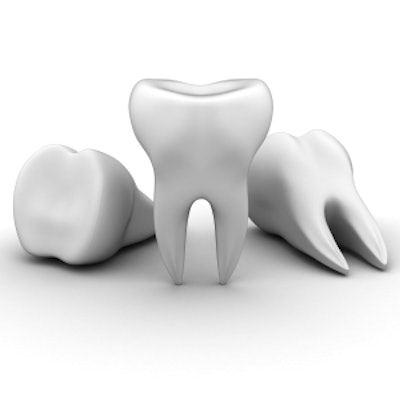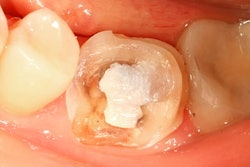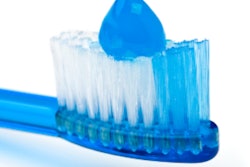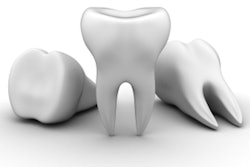
Which tooth wear evaluation tool works best? None, according to a new study. Researchers found that the four most common systems to categorize erosion all fall short of the requirements needed to be universally used in dental practice and research.
A team of international researchers realized that no universally applicable evaluation tool exists. Therefore, they set out to determine whether one of the existing systems could be used universally or if dental researchers need to create a new tool.
"It was this study's first aim to perform an in-depth analysis of the characteristics of four commonly used tooth wear evaluation systems to determine if ... [these systems show] characteristics of a hypothetical, broadly applicable evaluation system," wrote the study authors, led by Peter Wetselaar, DDS, an assistant professor at the University of Amsterdam and Vrije Universiteit Amsterdam (BMC Oral Health, November 3, 2016).
Creating a universal tool
More people are aging with their natural dentition, and erosion is becoming an increasingly common problem seen in the dental office. However, while there are universal systems to diagnose and monitor caries and periodontal disease, a similar tool does not exist for tooth wear.
Dr. Wetselaar and colleagues noted that, to be a universal tool, a tooth wear evaluation system must be able to do four things:
- Assess both chemical wear and mechanical wear.
- Be useful for clinical and research purposes.
- Have well-defined criteria.
- Be easy to use.
They chose to evaluate four systems frequently cited in scientific literature: Eccles index, tooth wear index, Lussi index, and basic erosive wear examination. Each of the four systems differs on how it categorizes tooth wear:
“None of the four systems show all characteristics of a hypothetical, broadly applicable tooth wear evaluation system.”
- The Eccles index has three classes defined by the extent of tooth wear and where the wear is located.
- The tooth wear index is a five-point scale that categorizes wear by the amount of enamel lost.
- The Lussi index contains two scales that categorize wear differently based on where it is located.
- The basic erosive wear examination is a four-point scale based on the percentage of dentine lost.
The researchers found that none of the four indexes met the criteria needed for a universal system. They also found that two of the indexes couldn't be combined to create a universal tool.
| Selected properties of a broadly applicable tooth wear system | ||||
| Properties | Eccles index | Tooth wear index | Lussi index | Basic erosive wear examination |
| Assesses chemical and mechanical wear | ✔ | |||
| Contains multiple assessment modes (i.e., chair, photographs, casts) | ✔ | ✔ | ✔ | |
| Can screen, diagnose, and monitor wear | ✔ | |||
| Uses a noncumulative scale | ✔ | ✔ | ✔ | |
| Contains two or fewer subscales | ✔ | ✔ | ||
"The analyzed four evaluation systems have several similarities, but on the other hand, they differ considerably and do not complement each other," the authors wrote. "None of the four systems show all characteristics of a hypothetical, broadly applicable tooth wear evaluation system."
Based on their findings, Dr. Wetselaar and colleagues realized a new tooth wear evaluation system that can be used universally needs to be developed. In their study, they proposed a modular system, with one tool for screening for tooth wear and one for diagnosing and monitoring it, that meets all their criteria.
| Proposed system for screening for tooth wear | |
| Score | Description |
| 0 | No visible wear |
| 1 | Wear in enamel |
| 2 | Wear in < 50% of horizontal surface area or a loss of ≤ 1/2 of crown height |
| 3 | Wear in > 50% of the horizontal surface area or a loss of > 1/2 of crown height |
| Proposed system for diagnosing and monitoring tooth wear | |||
| Score | Occlusal and incisal wear for a tooth's horizontal area | Occlusal and incisal wear for a tooth's vertical area | Nonocclusal and nonincisal wear |
| 0 | No visible wear | ||
| 1 | Wear in enamel | ||
| 2 | Wear in < 50% of surface area | Vertical loss of ≤ 1/3 of crown height | Wear in < 50% of surface area |
| 3 | Wear in more than 50% of surface area | Vertical loss of > 1/2 to ≤ 2/3 of crown height | Wear in > 50% of surface area or pulp is exposed |
| 4 | Complete loss of surface area enamel | Vertical loss of > 2/3 of crown height | N/A |
"A potentially feasible solution could be a modular evaluation system that consists of multiple modules," the authors wrote. "The modular system must be able to grade all subtypes of tooth wear, be applicable for all mentioned assessment modes, all purposes, all surfaces, and all directions of assessment."
Testing the new tool
The study findings are important, but they could also be unintentionally subjective to properties the researchers believe a universal tool needs. Nevertheless, they were able to create a new and potentially easier way to categorize wear in teeth.
Future research will have to test their tooth wear method in both clinical and research applications to see if the tool can be used universally. Dr. Wetselaar and colleagues noted research is specifically needed to see if the dental community will use a modular system, like the one they created.
"More research is required to explore the feasibility of such a modular evaluation system," the authors concluded. "The dental community must take its responsibility to reach an agreement upon this topic."



















